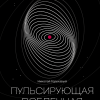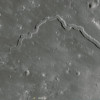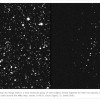Появилась статья о замечательном Викторе Сергеевиче, который создал не только аккреционную теорию образования планет, но и целую школу учеников, которые продолжают его дело. Статья взята из текста книги Дэна Левитта (https://www.amazon.com/Whats-Gotten-Into-You-Through/dp/0063251183/)
Я хорошо знал Виктора Сергеевича и не раз выступал у него на ИФЗ семинаре. Он был рецензентом моей кандидатской диссертации в 1986 году. Он действительно был скромным и умным человеком. Я не знал, что он болел малярией, но он действительно не выглядел здоровяком. Рад, что о нем помнят на Западе и даже пишут о нем книги. Сейчас в печати лежит моя статья про образование Луны - и я там активно ссылаюсь на его труды и работы его жены, Евгении Леонидовны Рускол.
'Modest, humble, and uncommonly smart': How a Soviet mathematician quietly solved the mystery of planet formation
Safronov, who dazzled colleagues with his gift for making quick mathematical estimations, set out to compute what happened when tiny particles within the disk smacked into one another and then struck their neighbors. With pencil and paper and a slide rule, perhaps in the quiet of a library where Soviet scientists often retreated from the hubbub of large common offices, he doggedly attempted to estimate the effects of trillions upon trillions of collisions. That was an incredibly daunting endeavor, with or without a computer. By comparison, one would think that calculating the path of a hurricane from the initial water droplets forming in clouds would be child's play.
Safronov realized that the swarm of cosmic dust and gas orbiting the sun would be traveling around at roughly the same speed and direction. Sometimes, when the particles bumped into their neighbors, they would stick together like snowflakes. More collisions begat bigger and bigger clumps, until they were as large as boulders, ocean liners, mountain ranges, and eventually mini-planets. Building on his insight, Safronov single-handedly outlined most of the major problems scientists would need to solve in order to explain the origin of our planets. And with mathematical bravado, he conquered many of them.
For years, he had the field of planetary formation, which he had created, virtually to himself. Most Soviet colleagues were skeptical and uninterested; his research appeared so speculative, so far removed from any evidence. Then, in 1969, Safronov published a slim paperback, a retrospective of his decade of lonely work. He presented a copy to a visiting American graduate student, who passed it on to NASA with a recommendation that they have it published. Three years later, an English version appeared in the West.
It would revolutionize our understanding of how Earth and all planets are created.








Комментарии (0)